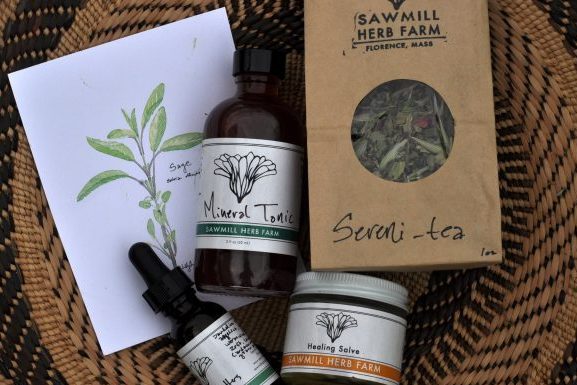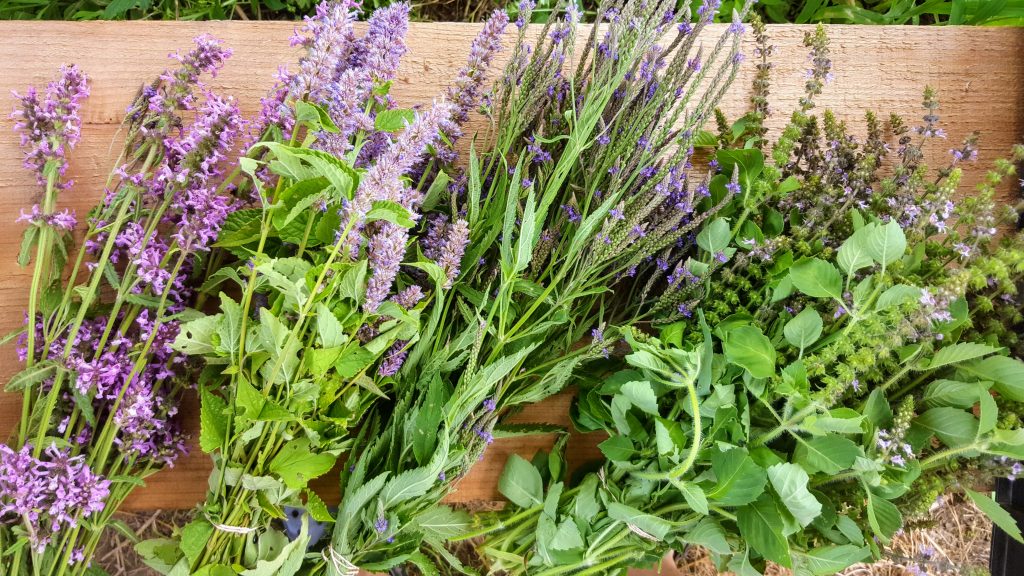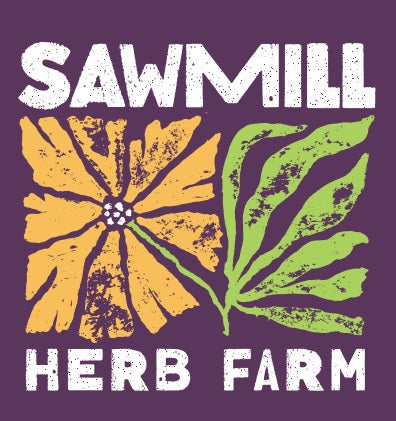Herb Profile: Oats
Oats, Avena sativa

We are thrilled to be offering you oats from our great crop this season. In the spring, we plant a cover crop of oats and field peas. The peas add nitrogen to the soil and the oats increase biomass and provide a structure for the peas to grow on. Also, at this time of year, we can harvest the oat tops and straw for medicine. A perfect example of a multifaceted approach to growing our own medicine.
We time the harvest to collect the seeds when the majority are at the “milky” stage, when the seeds are the most nourishing. We harvest the tops by knife, and the seeds can easily be stripped off the stem by hand. We use all the seeds, even the ones that are still less mature and not quite at the milky stage. The seeds are considered to contain the most medicine when processed fresh into tincture, although we still love them dried in tea blends. Milky oats are used as a tonic and nourishment for the nervous system. Oats are restorative and grounding, offering support for stress, anxiety, some forms of depression and symptoms of drug withdrawal.
The oatstraw is the rest of the plant that we harvest at the still green stage. We recommend cutting the whole plant into small pieces before drying, especially the thicker portions to prevent molding. The oatstraw is considered to be a very beneficial nutritive and nervine, and is best consumed as a tonic over time (as opposed to a quick acting herb for an acute situation). There is an excellent blog post by a VT herbalist all about how to make a tincture from milky oats, including links to lots of information about the medicinal properties of milky oats. To dry the seeds, lay them out on a tray or screen for a few days until dry. I also highly recommend checking out this blog post by 7song on milky oats and oatstraw. And this podcast by Herbs with Rosalee
Preparations
Add oats to your herbal infusions for a slightly sweet and nourishing tea. I love making a long mineral-rich infusion (6 hours or more) of milky oats or oatstraw, tulsi, nettles and calendula flowers for nourishing the nervous system. Here are some other combination ideas:
Women’s Tonic Tea
Refreshing and nourishing tonic. Combine and prepare as an infusion 2 parts lemon balm, 2 parts nettle, 2 parts mint, 2 parts raspberry leaf and 1 part milky oats or oatstraw. Drink 3 to 4 cups daily.
Nervine Tonic
Blend equal amounts of lemon balm, oats and chamomile and drink daily.
Fresh milky oats can also be made into a tincture or a delectable glycerine.
Cautions/Contraindications
Oats may be too sweet and damp for some constitutions or those with hypoglycemia. Also take caution with severe celiac disease.
🌿 Grow, Harvest & Learn with Us This Season! 🌿
Whether you're looking to fill your apothecary with vibrant, fresh herbs, start your own garden with strong, healthy seedlings, or deepen your knowledge of herbal medicine, we've got you covered.
Join our Fresh Herb CSA to receive weekly bundles of medicinal and culinary herbs, plus guidance on how to use them. Pre-order seedlings to get a head start on your herb garden with our carefully grown plants. Explore our herbal education programs to learn hands-on medicine-making, plant connection, and more.
Looking for high-quality, certified organic herbs year-round? We also offer dried herbs and small-batch tea blends, thoughtfully grown and harvested to bring you the best in herbal wellness.
Be part of a community that values resilience, self-sufficiency, and deep connection to the land. 💚
Sign up for the CSA, pre-order seedlings, shop our dried herbs and tea blends, or explore our herbal education offerings today!
Disclaimer
These statements have not been evaluated by the Food and Drug Administration. This product is not intended to diagnose, treat, cure, or prevent any disease. For educational purposes only. We do not endorse the websites linked to in the resources and have not extensively reviewed all the information on external pages for accuracy. Everyone reacts differently to herbs and we do not attempt to be completely inclusive in the information and contraindications for each herb. Trust your intuition if something is not feeling right for you.
Shop our Apothecary and Nursery
-

Apothecary Products
Nourish yourself and your family with a certified organic farm grown apothecary ...
-

Nursery Products
Grow your garden. We grow certified organic herb, flower and vegetable starts...


